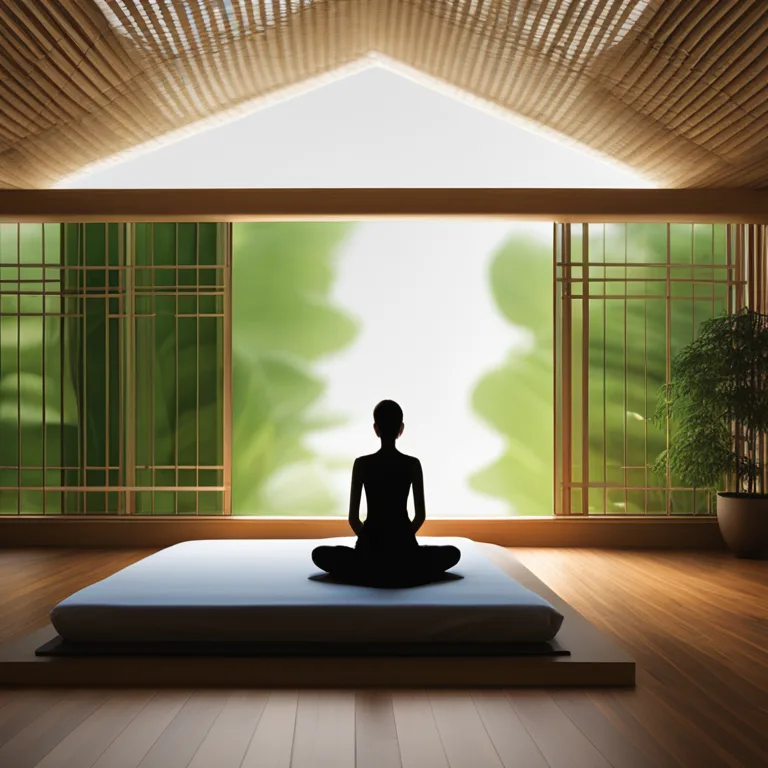
Soothing Meditations for Better Sleep
Discover meditation techniques designed to improve sleep quality and foster deep relaxation.
article by Hina Kurosawa
The Importance of Sleep
Sleep is essential for our health and well-being. Quality sleep helps in the healing and repair of our heart and blood vessels, supports growth and development, and aids in maintaining a healthy balance of hormones. Unfortunately, many of us struggle to get a restful night's sleep consistently. Factors like stress, a disruptive bedroom environment, and irregular sleeping patterns can significantly interfere with our sleep. Meditation is emerging as a powerful tool for combating sleeplessness and enhancing sleep quality. In this article, we will explore a variety of meditation techniques that have been shown to aid in this critical aspect of health.

Understanding Sleep Meditation
Sleep meditation is a practice that uses relaxation techniques to calm the mind and prepare the body for sleep. Practices vary from mindfulness to guided visualizations, all with the goal of reducing stress and anxiety that can hinder rest. By focusing on the moment and allowing thoughts to pass without judgment, meditation can help lower the heart rate and blood pressure, creating the right physiological conditions for sleep. With the rising popularity of sleep technology and applications, finding suitable guided meditations has become more accessible than ever.

Breath-Focused Meditation
Breathing exercises are often the foundation of effective sleep meditation. A simple technique involves deep, rhythmic breathing that can be performed lying down in bed. The “4-7-8” method, developed by Dr. Andrew Weil, is a popular technique: breathe in for four seconds, hold for seven seconds, and exhale for eight seconds. This practice slows the breath and encourages a state of calm, signaling the body it is time to wind down. Consistent practice of breath-focused meditation can be especially beneficial for those with insomniac tendencies.

Progressive Muscle Relaxation (PMR)
Progressive Muscle Relaxation (PMR) is another technique that can assist with falling asleep. PMR involves tensing and then relaxing different muscle groups in the body, usually starting from the feet and working up to the face. This helps in identifying areas of tension and promotes overall relaxation. It is important to maintain focused and slow breathing throughout this process, as it enhances the relaxation effect. PMR can be particularly effective for those who experience physical tension or stress-related muscle aches that prevent comfortable rest.

Guided Imagery and Visualization
Visualization meditation involves mentally picturing a peaceful setting or story, which can effectively divert the mind from daily stressors. Many sleep apps and websites now offer a wide variety of guided visualizations tailored specifically to sleep. While listening to a calming narrative, the listener is prompted to build a detailed mental image, which can transport the mind away from anxious thoughts and towards a state conducive to sleep.
Mindfulness Meditation
Mindfulness meditation encourages awareness of the present moment while acknowledging and letting go of intrusive thoughts. This practice can be done at any time but is especially helpful when lying in bed, unable to sleep. Techniques taught by leaders in mindfulness, like Jon Kabat-Zinn, involve observing thoughts and sensations without judgement and gently returning focus to the breath whenever the mind wanders. Mindfulness can reduce bedtime worry and create a peaceful state of mind that invites sleep.
Biorhythmic Music and Soundscapes
Recent advances in sleep science have emphasized the potential of biorhythmic music and soundscapes in meditative practices for sleep. Sounds that mimic the rhythms of the natural world can enhance the meditation experience, syncing with our biological rhythms to promote relaxation and sleep. Combining slow, harmonious melodies with meditation can help synchronize the body’s internal clock, leading to improved sleep patterns over time.
Setting the Stage for Sleep Meditation
The environment is a critical factor in the success of sleep meditation. Creating a peaceful and comfortable sleep space is important, which may include regulating temperature, reducing light exposure, and minimizing noise and electronic disturbances. Recent trends in home automation allow for the customization of sleep environments, with smart lighting that emulates sunset and devices that generate white noise or nature sounds, all aimed at enhancing the quality of rest through a serene atmosphere.
A Regular Bedtime Ritual
Finally, incorporating sleep meditation into a consistent bedtime routine can significantly increase its effectiveness. Fostering habits that signal the mind and body that it's time to rest — such as dimming lights, reading, or a warm bath before meditating — can enhance the sleep-inducing effects of meditation practices. Consistency not only creates a strong psychological association between these activities and sleep but can also stabilize circadian rhythms, further improving sleep quality.
Published: 12/20/2023
Modified: 12/20/2023
More predictions
Come back here soon to learn more about yourself and your future


Meditation Techniques For Healing
Discover effective meditation techniques for promoting healing and enhancing well-being in this insightful guide.


Can Meditation Improve Sleep?
Discover if meditation can be the key to better sleep and how it influences your nightly rest.


Mindfulness Meditation Techniques
Discover effective meditation practices to enhance mindfulness and promote inner peace in our fast-paced world.